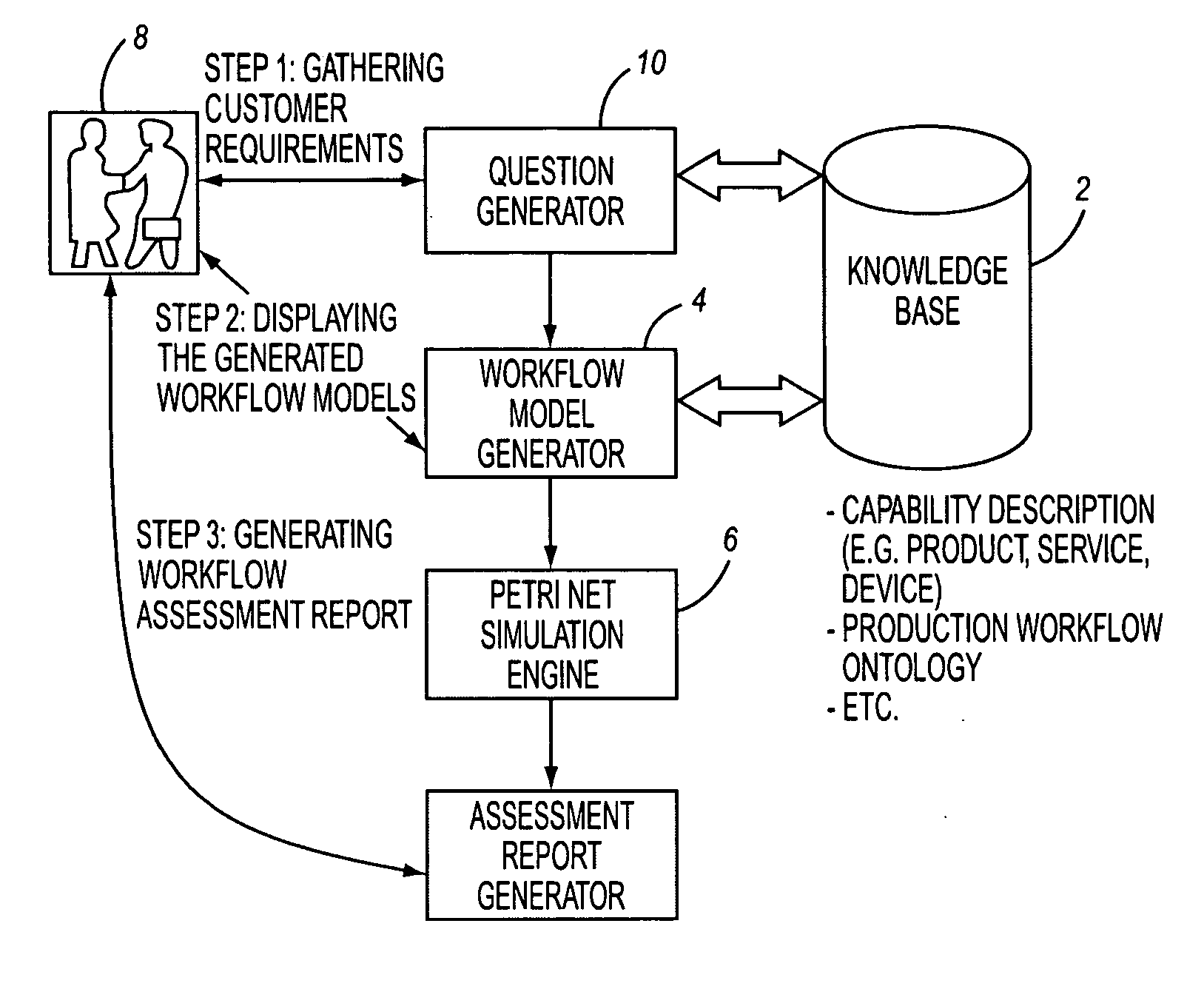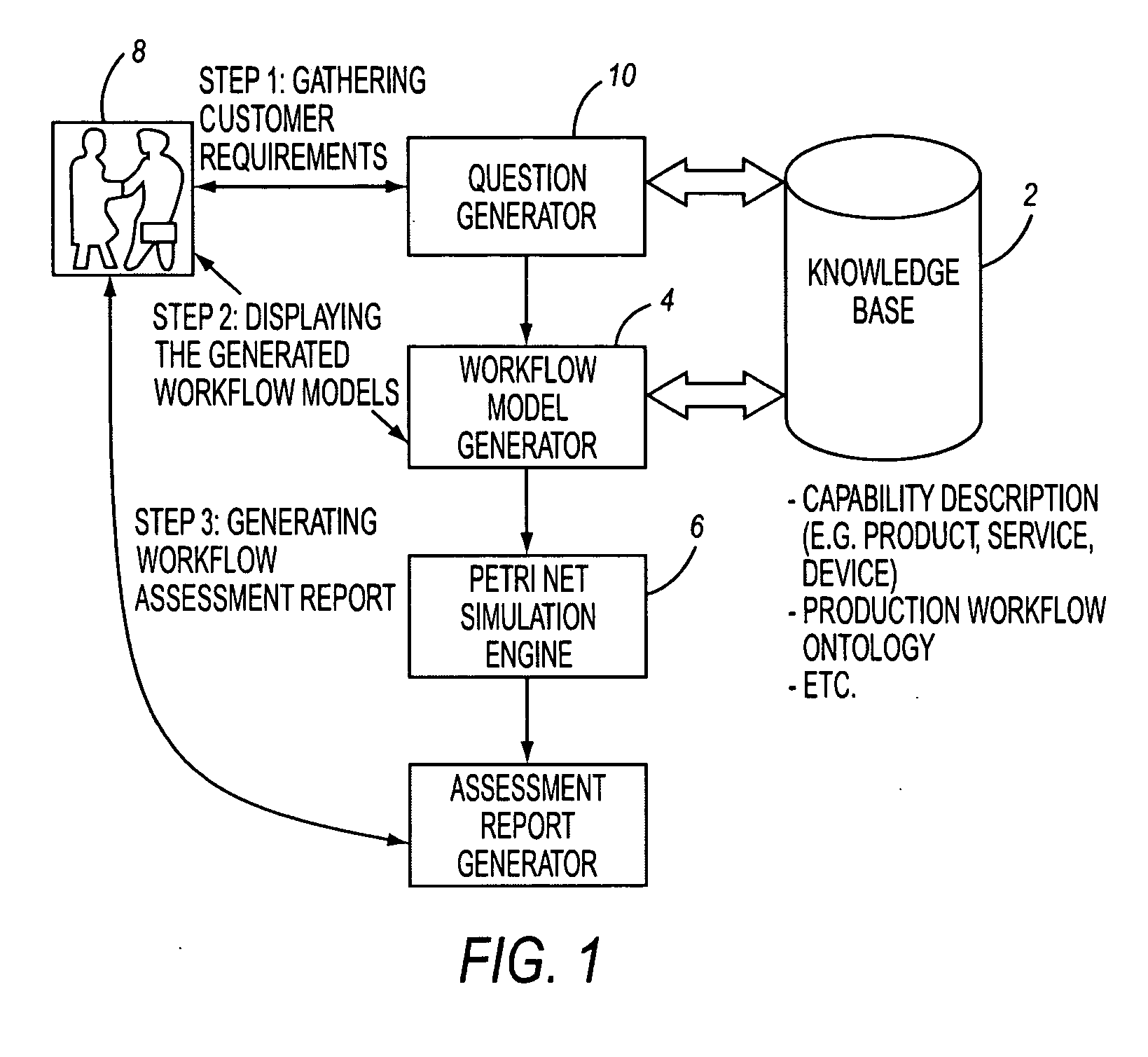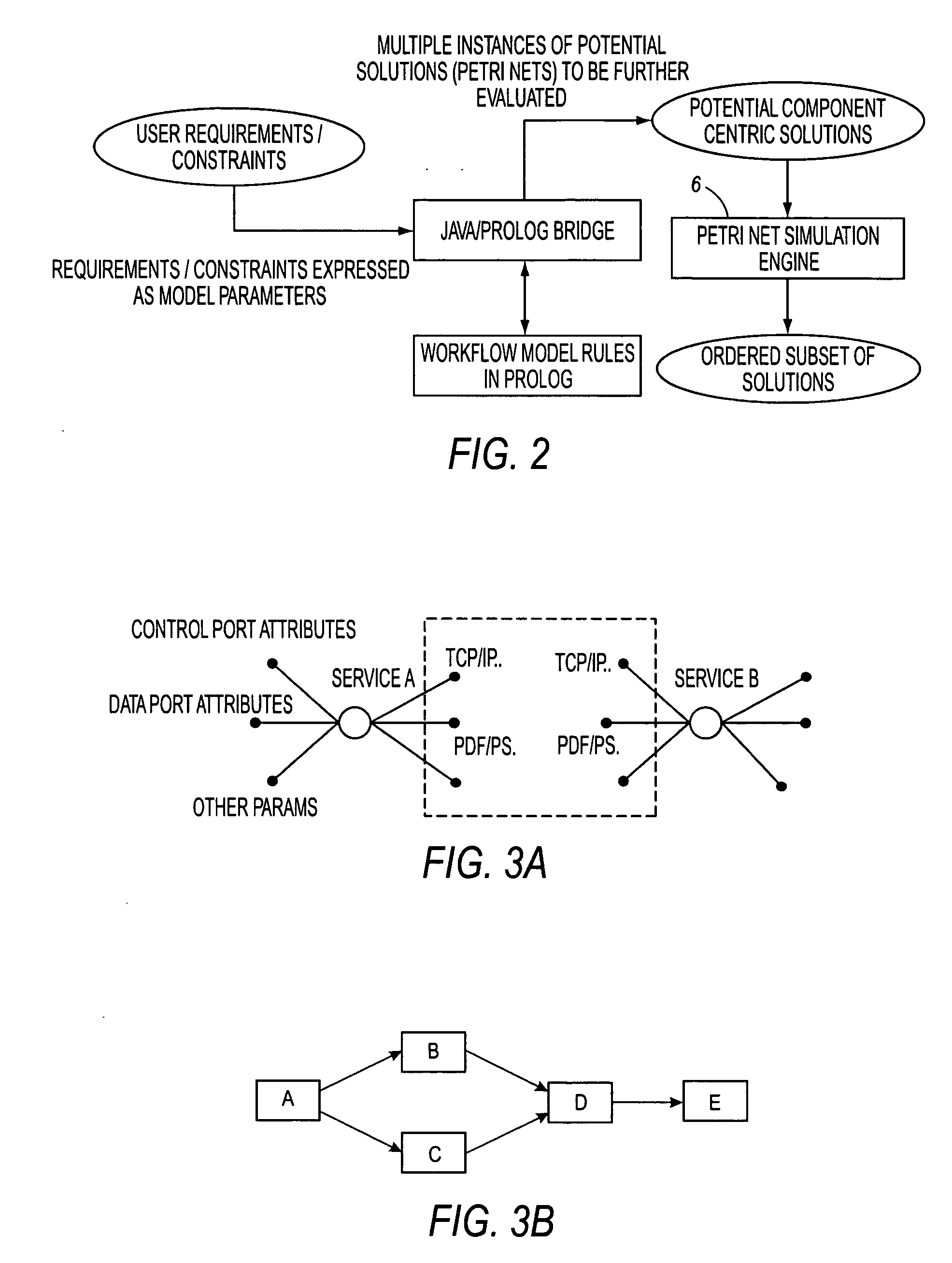Workflow auto generation from user constraints and hierarchical dependence graphs for workflows
a workflow and user constraint technology, applied in the field of workflow auto generation and workflow analysis, can solve the problems of high manual and cumbersome effort, and the integration of heterogeneous distributed systems is a considerable challeng
- Summary
- Abstract
- Description
- Claims
- Application Information
AI Technical Summary
Benefits of technology
Problems solved by technology
Method used
Image
Examples
Embodiment Construction
[0043] The present disclosure provides a formal way of modeling and evaluating workflows, which obviates the current intuitive, trial-and-error approach. It is a technique for dynamically auto-generating all valid workflow models from a given set of functional requirements and determining optimal workflows based upon varying sets of user-specified parameters. It replaces a cumbersome manual effort of trial and error. Workflow service descriptions containing functional attributes, which describe control and data interfaces, and non-functional attributes which describe service features and performance metrics, are stored in a logical database. Logically valid workflows are then generated by using a formal mechanism called Petri Nets. The valid workflows are evaluated against user-defined metrics to determine optimal workflows. The user-defined metrics are obtained by a questions-generation mechanism. Possible workflows are visualized in various views using auto-graph layout techniques...
PUM
 Login to View More
Login to View More Abstract
Description
Claims
Application Information
 Login to View More
Login to View More - R&D
- Intellectual Property
- Life Sciences
- Materials
- Tech Scout
- Unparalleled Data Quality
- Higher Quality Content
- 60% Fewer Hallucinations
Browse by: Latest US Patents, China's latest patents, Technical Efficacy Thesaurus, Application Domain, Technology Topic, Popular Technical Reports.
© 2025 PatSnap. All rights reserved.Legal|Privacy policy|Modern Slavery Act Transparency Statement|Sitemap|About US| Contact US: help@patsnap.com



